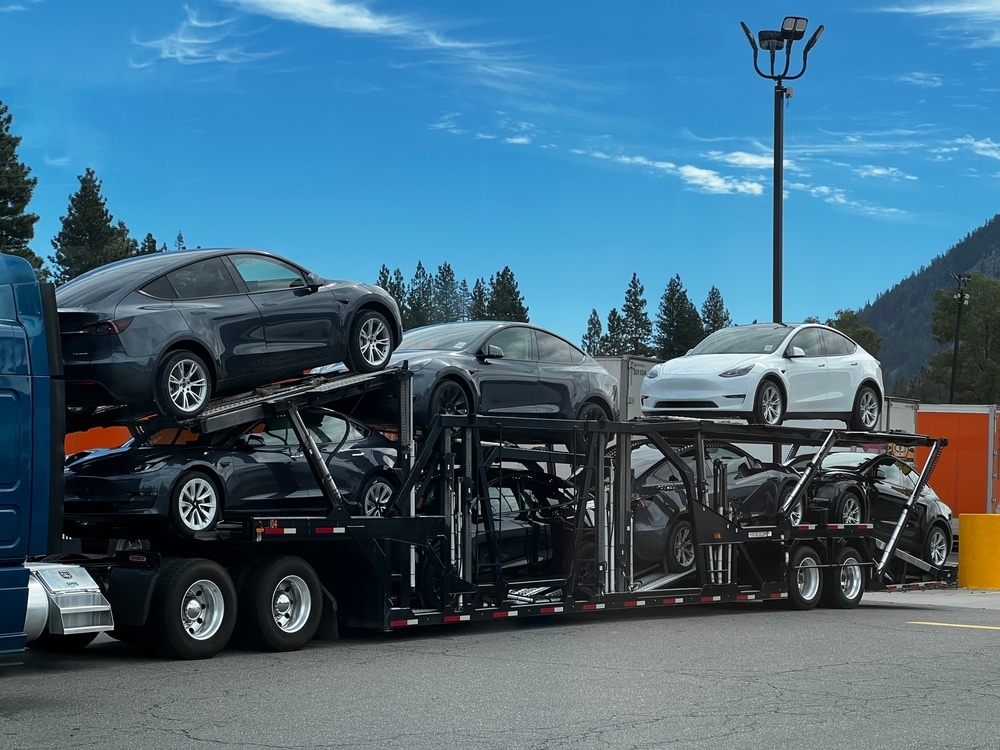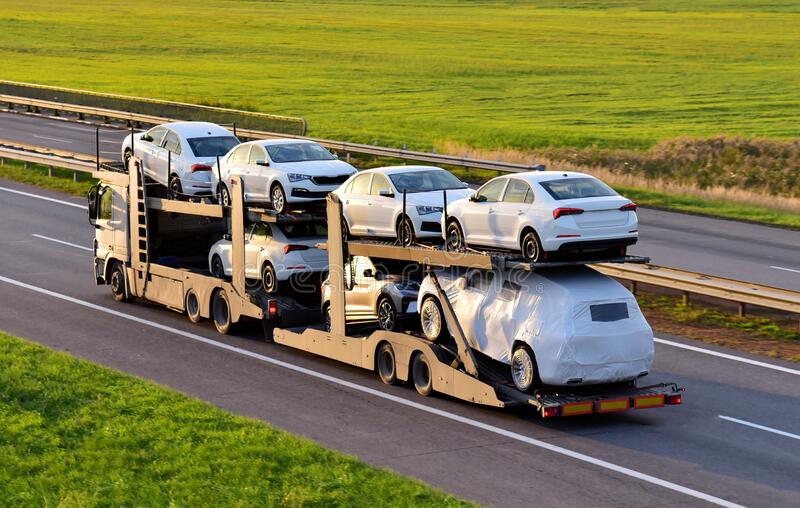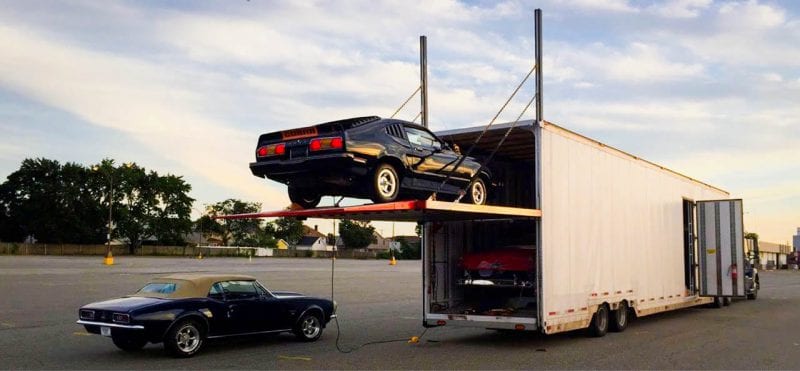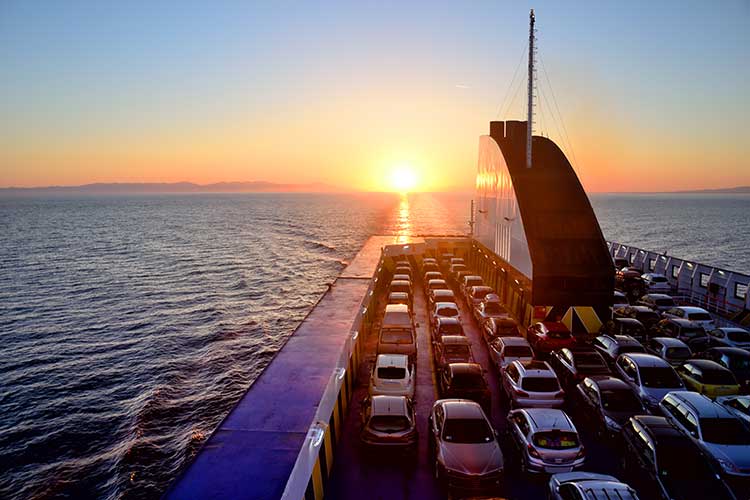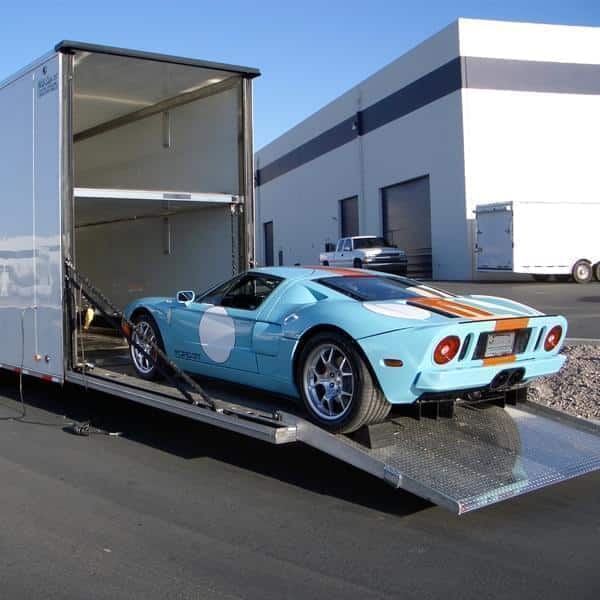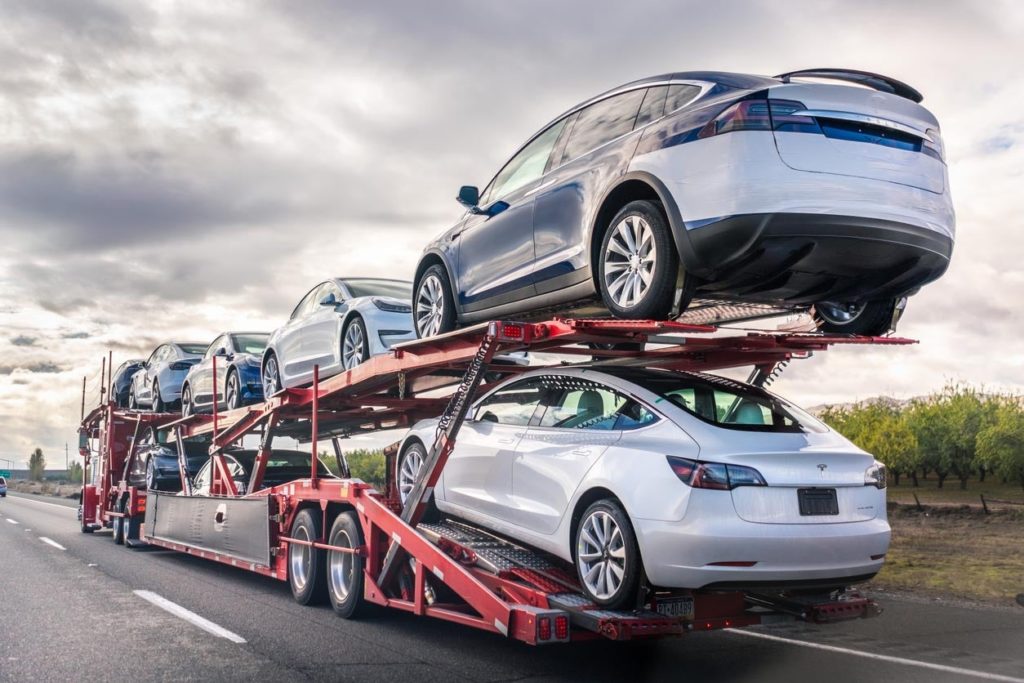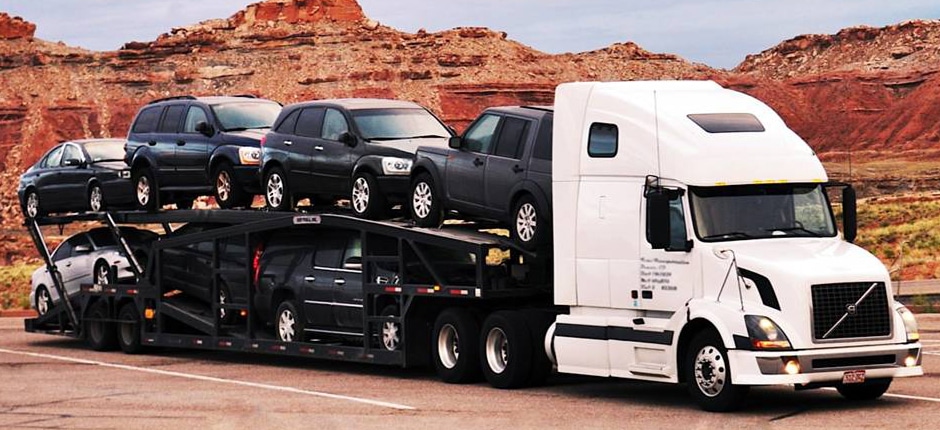Enclosed VS Open Car Shipping (Choice Made Easy)
When it comes to shipping your vehicle, choosing between enclosed or open transport can be a major decision. Both methods have their advantages and disadvantages, and it is important to consider several factors to make the best choice for your specific needs. Enclosed transport offers maximum protection and security for your vehicle, while open transport is more cost-effective and widely available. Additionally, the type of vehicle being transported and the distance of the transport can also impact the decision.
Luxury, vintage, and sports cars typically require enclosed transport to ensure maximum protection during transport, while open transport may be suitable for standard cars and trucks. The distance of the transport can also impact the decision, with enclosed transport typically recommended for longer distances to protect against the weather and road debris.
Ultimately, the decision between enclosed or open transport comes down to individual preferences and needs. In this article, we will explore the pros and cons of enclosed and open transport and provide insights to help you make an informed decision when it comes to shipping your vehicle.
What is Open Car Shipping?
Open car shipping is a common and cost-effective method of transporting vehicles over long distances. This shipping method involves loading multiple vehicles onto an open trailer and transporting them to their destination. When writing about open-car shipping, it is important to create conversational content that is informative, engaging, and tailored to the reader’s specific interests and needs.
Open car shipping is a popular option for those looking to transport standard vehicles, as it is generally more affordable than enclosed car shipping. It is also widely available, making it easier to find a carrier and schedule transport. Open car shipping carriers can typically accommodate multiple vehicles, making it a more efficient and cost-effective option for both carriers and car owners.
While open-car shipping is generally safe and reliable, it does expose vehicles to the elements and other hazards on the road. This can result in minor cosmetic damage, such as chipped paint or dents, as well as exposure to inclement weather conditions. However, the risk of damage during open car shipping is generally low, and most vehicles arrive at their destination in good condition.
Another benefit of open car shipping is that it is a great option for those who need to transport their vehicle quickly. Since open car shipping carriers are more widely available, it is often easier to find a carrier and schedule transport on short notice.
In conclusion, open car shipping is a common and cost-effective method of transporting vehicles over long distances. It is an excellent option for those looking to transport standard vehicles and is widely available, making it easy to find a carrier and schedule transport. While it does expose vehicles to the elements and other hazards on the road, the risk of damage is generally low, and most vehicles arrive at their destination in good condition. By using natural language, addressing common concerns and questions, and providing helpful tips and advice, readers can learn about the benefits of open car shipping and make an informed decision about their vehicle transportation needs.
What is Enclosed Auto Transport?
Enclosed auto transport is a premium method of transporting vehicles that offer increased protection from the elements and other hazards during transportation. This method of transportation is often used for high-end luxury vehicles, classic cars, and sports cars that require extra care and attention during transportation. When writing about enclosed auto transport, it is important to create conversational content that is informative, engaging, and tailored to the reader’s specific interests and needs.
Enclosed auto transport uses a fully enclosed trailer to transport vehicles, providing increased protection from weather, road debris, and other hazards. This method of transportation is the ideal option for car owners who want to ensure that their vehicle is transported safely and securely to its destination. Enclosed auto transport is especially useful for owners of luxury and exotic cars that require extra protection and care during transport.
One of the main benefits of enclosed auto transport is that it protects your vehicle from the elements, such as wind, rain, and sunlight, which can cause damage to the car’s exterior and interior. Additionally, enclosed auto transport also protects your vehicle from debris on the road, such as rocks, gravel, and dust. Enclosed auto transport carriers are equipped with state-of-the-art technology and safety measures to ensure that your vehicle is transported safely and securely.
Another advantage of enclosed auto transport is that it offers greater privacy and security than open auto transport. Since the vehicle is fully enclosed, it cannot be seen by other drivers on the road, reducing the risk of theft or vandalism. Additionally, many enclosed auto transport carriers have GPS tracking systems that allow you to track the location of your vehicle during transport.
In conclusion, enclosed auto transport is a premium method of vehicle transportation that provides increased protection, privacy, and security for high-end luxury vehicles, classic cars, and sports cars. By using natural language, addressing common concerns and questions, and providing helpful tips and advice, readers can learn about the benefits of enclosed auto transport and make an informed decision about their vehicle transportation needs.
Difference Between Open and Enclosed Car Shipping
Transporting your vehicle over long distances can be a daunting task, especially if you’re not familiar with the different shipping methods available. Two of the most popular options are open car shipping and enclosed-car shipping. Both methods have their advantages and disadvantages, and it’s important to understand the key differences between them before deciding which one is right for you.
Open car shipping is the most common and cost-effective way to transport a vehicle. This method involves loading multiple cars onto an open trailer and transporting them to their destination. While this method is generally safe and reliable, it does expose the vehicles to the elements and other hazards of the road, such as debris and inclement weather. This can result in minor cosmetic damage such as chipped paint or dents. However, open car shipping is an excellent option for those looking to transport standard vehicles, as it is generally more affordable than enclosed car shipping.
Enclosed car shipping, on the other hand, is a premium shipping method that offers increased protection for your vehicle during transport. Enclosed car carriers use fully enclosed trailers, protecting your car from the elements and other hazards on the road. This makes enclosed car shipping the ideal option for high-end luxury vehicles, classic cars, and sports cars that require extra care and attention during transportation. While it is generally more expensive than open-car shipping, the added protection and peace of mind make it worth the investment for many car owners.
Another key difference between open and enclosed car shipping is the availability of carriers. Open car shipping carriers are more widely available, making it easier to find a carrier and schedule transport. Enclosed car shipping carriers, on the other hand, are less common and may require more advanced scheduling. It’s important to plan ahead and make arrangements for your vehicle transportation well in advance to ensure availability and timely delivery.
In conclusion, the main differences between open and enclosed car shipping are cost, level of protection, and carrier availability. Open car shipping is generally more affordable and widely available, while enclosed car shipping offers increased protection for your vehicle and is the preferred option for high-end luxury and classic cars. By understanding the differences between these two methods, you can make an informed decision on which shipping option is right for you and your vehicle.
Enclosed vs open car shipping
Enclosed Pros and Cons
Enclosed auto transport is a premium method of transporting vehicles that offer increased protection and security during transportation. However, like any shipping method, there are both advantages and disadvantages to using enclosed shipping. Here are the pros and cons of enclosed auto transport:
Pros:
- Increased protection from the elements, such as wind, rain, and sunlight.
- Protection from road debris, such as rocks and gravel, which can cause damage to the car’s exterior and interior.
- Increased privacy and security, as the vehicle is fully enclosed and cannot be seen by other drivers on the road.
- State-of-the-art technology and safety measures ensure your vehicle is transported safely and securely.
- Ideal for high-end luxury vehicles, classic cars, and sports cars that require extra protection and care during transport.
Cons:
- More expensive than open auto transport.
- Limited availability, as there are fewer carriers that offer enclosed auto transport services.
- Longer transit times, as carriers often have to navigate through more congested and challenging routes to ensure the safety and security of the vehicle.
- Less flexibility in terms of scheduling, as carriers may have fewer options for pick-up and delivery times.
- Limited space, as enclosed auto transport carriers, can typically accommodate fewer vehicles than open carriers.
Open Pros and Cons
Open car shipping is a popular method of transporting vehicles over long distances that involves loading multiple vehicles onto an open trailer and transporting them to their destination. Like any shipping method, there are both advantages and disadvantages to using open car shipping. Here are the pros and cons of open-car shipping:
Pros:
- More affordable than enclosed car shipping.
- Widely available, making it easier to find a carrier and schedule transport.
- Carriers can typically accommodate multiple vehicles, making it a more efficient and cost-effective option.
- Ideal for standard vehicles that do not require extra protection or care during transport.
- A great option for those who need to transport their vehicle quickly, as open car shipping carriers are more widely available.
Cons:
- Vehicles are exposed to the elements and other hazards on the road, which can result in minor cosmetic damage, such as chipped paint or dents, as well as exposure to inclement weather conditions.
- Limited protection and security, as the vehicle, is not fully enclosed and can be seen by other drivers on the road.
- Higher risk of damage during transport, although this risk is generally low.
- Less privacy and security, as the vehicle, can be accessed more easily by others during transport.
- Limited availability during peak season, as carriers may be in high demand and have limited capacity.
FAQS
Should I Ship My Car Open Or Enclosed?
When it comes to shipping your car, one of the most important decisions you will have to make is whether to choose open or enclosed auto transport. Each option has its own advantages and disadvantages, and the decision ultimately depends on your specific needs and preferences. Here are some factors to consider when deciding whether to ship your car open or enclosed:
First, consider the value and condition of your vehicle. If you own a high-end luxury car or a classic vehicle that is worth a significant amount of money, you may want to consider enclosed auto transport to ensure maximum protection during transport. However, if you own a standard vehicle that is not particularly valuable, open auto transport may be a more affordable and practical option.
Second, consider the distance and route of your transport. If your car is being transported over a long distance or through rough terrains, such as unpaved roads, enclosed auto transport may be a better option to protect your vehicle from potential damage. However, if your car is being transported over a short distance and on well-maintained roads, open auto transport may be a viable and cost-effective option.
Lastly, consider your budget and scheduling needs. Enclosed auto transport is typically more expensive than open auto transport, so if cost is a concern, open auto transport may be the best option. Additionally, open auto transport is more widely available and can be scheduled more quickly and easily than enclosed auto transport, which may be a factor to consider if you need your car transported urgently.
Ultimately, the decision to choose open or enclosed auto transport comes down to your individual preferences and needs. Consider the factors above and choose the option that is best for you and your vehicle.
How much does it cost to ship a car in enclosed Car Carriers?
The cost of shipping a car in an enclosed trailer can vary depending on a number of factors, including the distance of the transport, the type of vehicle being transported, and the specific carrier and services are chosen. On average, the cost of enclosed auto transport can range from $1,000 to $4,000 or more, with an average cost of around $1.50 to $2.50 per mile. Some carriers may charge extra fees for additional services, such as door-to-door transport or expedited shipping. Additionally, the time of year can also impact the cost, with peak season typically being more expensive due to higher demand. It is important to obtain multiple quotes from different carriers and carefully review the services and pricing offered to ensure that you are getting the best value for your money.
What Affects Open Vs. Enclosed Car Transport Prices
When it comes to transporting your car, one of the most significant factors that will affect the pricing is the choice between open and enclosed transport. Here are some of the factors that can impact the price of open vs. enclosed auto shipping:
- Distance: The farther the distance, the more expensive the transport will be, regardless of whether it is open or enclosed.
- Type of Vehicle: The type of vehicle being transported can also impact the price, as larger or heavier vehicles will require more space and may require specialized equipment.
- Season: The time of year can also impact pricing, with peak season (typically during the summer months) being more expensive due to higher demand.
- Carrier and Services: The carrier you choose and the services you require can also impact the pricing. For example, expedited shipping or door-to-door transport may be more expensive than standard services.
- Insurance: Enclosed transport typically has more insurance coverage, which can also impact the price.
- Availability: Availability can also impact pricing, with limited availability during peak season potentially driving up the price.
It is important to consider these factors when choosing between open and enclosed transport to ensure that you are getting the best value for your money.
Here are a few tips on calculating car transport costs.
Which Option is Best for Shipping a Luxury, Vintage, Or Sports Car?
When it comes to shipping a luxury, vintage, or sports car, enclosed transport is typically the best option to ensure maximum protection during transport. These types of vehicles are often valuable and may require special handling to prevent damage during transport. Enclosed transport provides added security, protecting the vehicle from weather and road debris, and reduces the risk of scratches or dents. While enclosed transport may be more expensive than open transport, the added protection and peace of mind may be worth the cost for valuable vehicles. It is important to carefully consider the specific needs and requirements of your vehicle when choosing between open and enclosed transport.
You can learn everything about luxury car transportation from here.
What to Look for in an Auto Transport Company While Hiring?
When it comes to hiring a car shipping company, it is important to do your research and find a reputable and reliable provider. Here are some things to look for when choosing a car shipping company:
- Experience: Look for a company with a proven track record of experience and success in the industry.
- Services: Determine what type of services the company offers and ensure they can meet your specific needs.
- Insurance: Confirm that the company has adequate insurance coverage to protect your vehicle during transport.
- Reviews and Ratings: Check online reviews and ratings to see what previous customers have to say about their experience with the company.
- Cost: Obtain quotes from multiple providers to compare pricing and ensure you are getting a fair price.
- Licensing and Accreditation: Ensure that the company is properly licensed and accredited by the relevant industry organizations and regulatory agencies.
- Communication: Choose a company that communicates clearly and frequently throughout the transport process, keeping you updated on the status of your vehicle.
By carefully considering these factors, you can find a reputable and reliable car shipping company to transport your vehicle with confidence.

